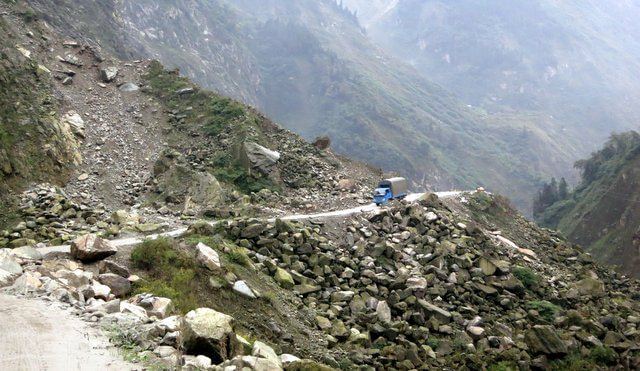
A famous poet wrote that crossing Sichuan is as difficult as climbing up to the heavens. Mountains so steep that monkeys cannot climb over them and eagles cannot fly over them.
Sichuan is divided into two clear regions. In just 50km the land rises from the 600m high fertile Sichuan basin in the east, to the beginnings of the Tibetan plateau in the west, reaching up over 6500m.
Between these is the Longmen Shan fault line, the cause of the 2008 Wenchuan earthquake that measured 8.0 on the Richter Scale. The series of quakes and aftershocks killed nearly 70,000 people and left 11 million homeless.
This rapid change in altitude leads to prolonged periods of monsoon rain, which combine with minor earthquakes to cause huge landslides every summer. These slips destroy the transport infrastructure nearly every year.
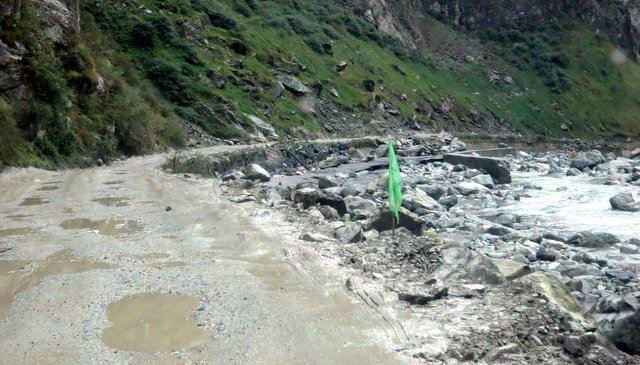
Green flag – must be safe…
The combination of Sichuan’s wealth of natural resources and its inaccessibility has historically meant that whoever controls the region can use it like an independent kingdom, away from the watchful eye of Beijing.
Our new driver has guided people through this area for the last 30 years and it showed. Had we been driving on our own I think we would have lasted about 100 metres.
The road was appalling. Huge sections were missing, crumbled away into the fast-flowing river below.
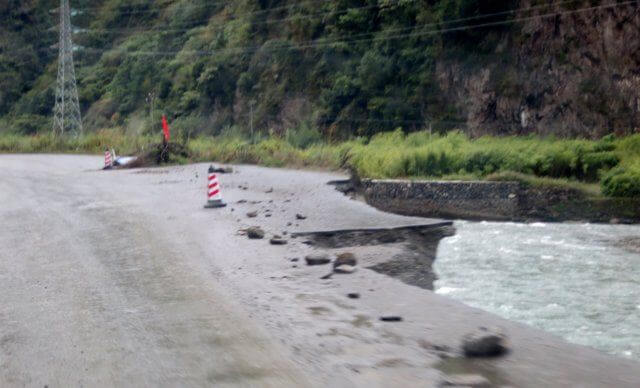
Looks fine…
Other sections are buried under massive rock falls. The huge boulders are too large to move out of the way so a new section of road has to be built round them.
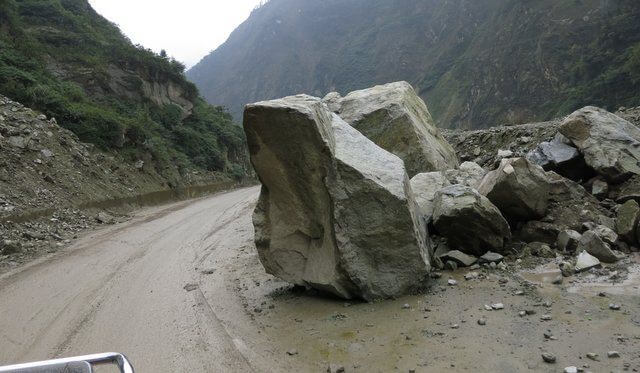
Rock blocking the road in Sichuan
Any sections undamaged by natural causes seem to be getting dug up anyway, for no discernible reason. Because of this continuous reconstruction, the roads are busy with lorries ferrying gravel and rock to the various concrete factories built alongside the road.
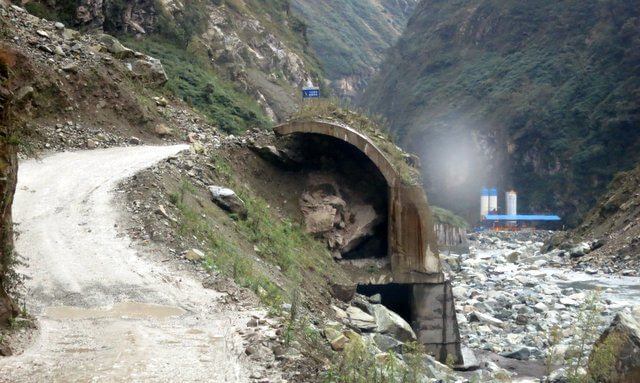
This tunnel had seen better days
The scariest part was the tunnels. Those that hadn’t collapsed had power cuts, so even with headlights on full beam, visibility was just a couple of metres:
In amongst all this work and chaos we were one of the few non-essential vehicles taking the route, or so I thought until we passed a couple of cyclists. This young Canadian couple were only a couple of miles into the stretch under construction, and I didn’t envy them the journey ahead.
Of course, in amongst this some parts are still beautiful, if perfect for another rockfall:
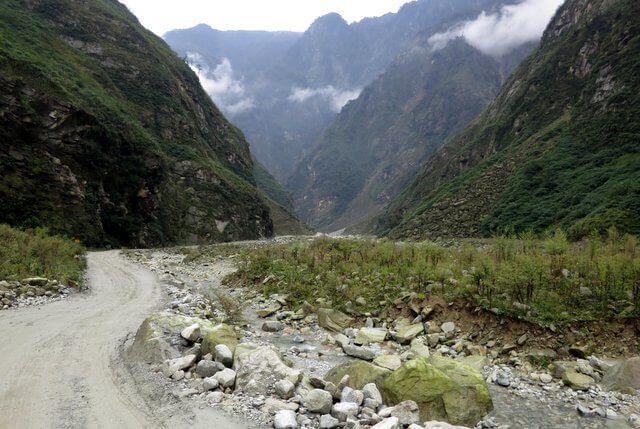

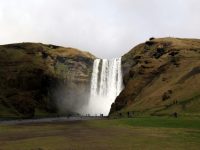








Quite a ride, indeed! Kinda like a theme park ride – not so sure at the beginning but by the end I want to do it again. 🙂
Pingback: Lisa Niver Rajna (@wesaidgotravel)
Pingback: Steve Whitty (@stevo120665)
Pingback: @OutdoorDalmatia
Pingback: Penny Sadler (@PennySadler)
Pingback: @pursuexcitement
Pingback: @mommykatandkids
Lordy, those look like frightening roads! I don’t think I’d be brave enough to drive them. I have a serious fear of “bus plunge” journeys.
Pingback: Liz Borod Wright (@Travelogged)
Pingback: Changes in Longitude (@Changes_Long)
reminds me of kobi’s pics while driving to cusco peru. woah.
Pingback: Theodora Sutcliffe (@escapeartistes)
Yikes! :0
Pingback: Reena Ganga (@wanderplex)
Pingback: @madreislena
Pingback: Cole and Adela (@FourJandals)
Pingback: Linda McCormick (@EcoTraveller)
Pingback: @ALEAHphils
Now that’s not for the faint of heart! I’d hate to be anywhere nearby when some of those boulders came crashing down.
Wow, those roads are unbelievable. Reminds me of some rural roads here in the Philippines!
I made the mistake of buying a little gas-powered scooter to drive through the backroads of Sichuan and Yunnan. Parts of it were beautiful, but roads like these had me vowing never to do it again!
Ouch – that sounds painful, but it’s a good idea to get away from the beaten track
Agreed, on both counts. By the time I got down to the Laotian border I sold the thing for like half of what I paid for it – just to be a bit more removed from all the potholes!
Nice site, by the way. Your most recent posts have me missing China quite a bit!
Pingback: Micki & Charles (@BarefootNomads)
Pingback: Green Global Travel (@GreenGlobalTrvl)
Pingback: TheWorldofDeej (@TheWorldofDeej)